The chart below appeared on my LinkedIn feed and it shows the comparison between Zoom Technologies and Zoom Video Communications since the beginning of the pandemic.
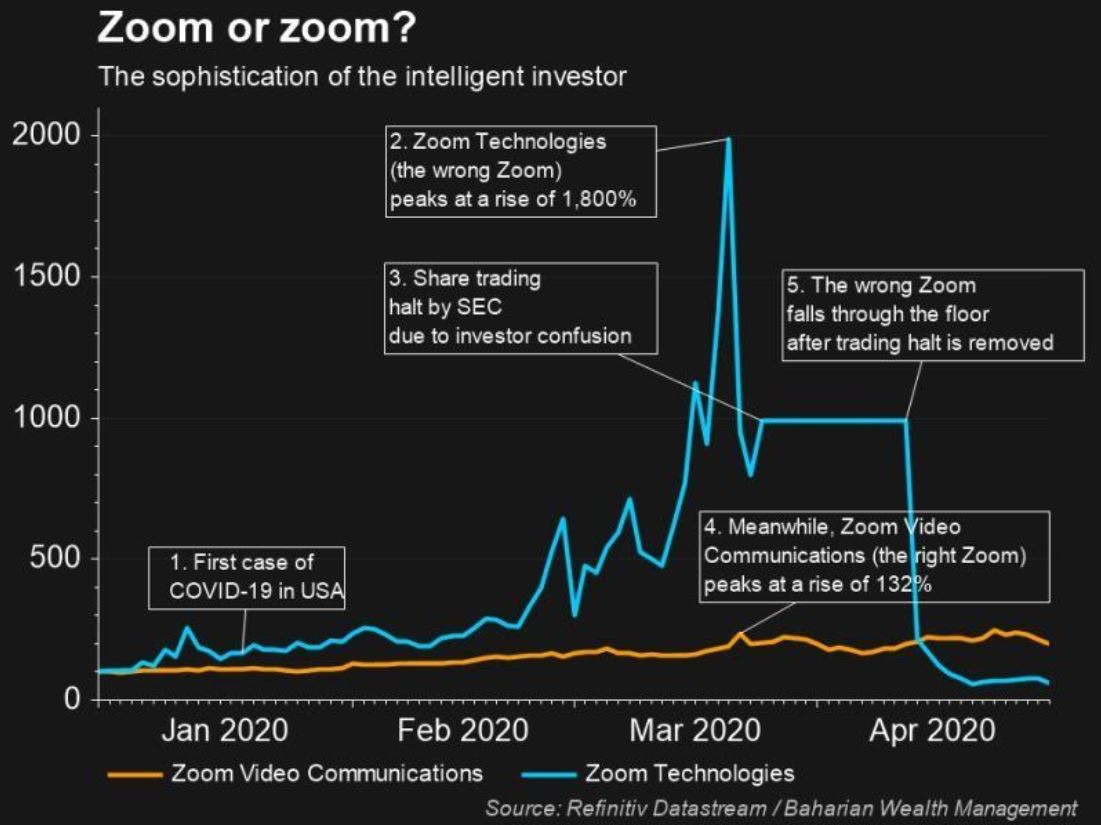
The image was also accompanied by this post –
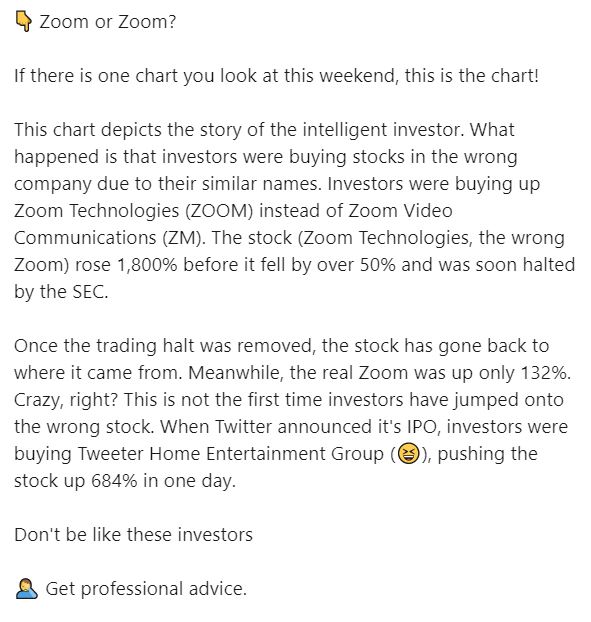
Its a somewhat snarky dig at investors who confused the two groups with the wonderful advice that you should professional advice. Well, you could have guessed that I wasn’t going to let this go – whenever someone refers to those who give financial advice to others as professional I just have to say something and also to point out a few facts. From the above chart, it is a little difficult to quantify that differences in performance so I converted everything into the value of $1 invested as you can see the shape of the curves are identical but we now have a clearer basis for comparison.
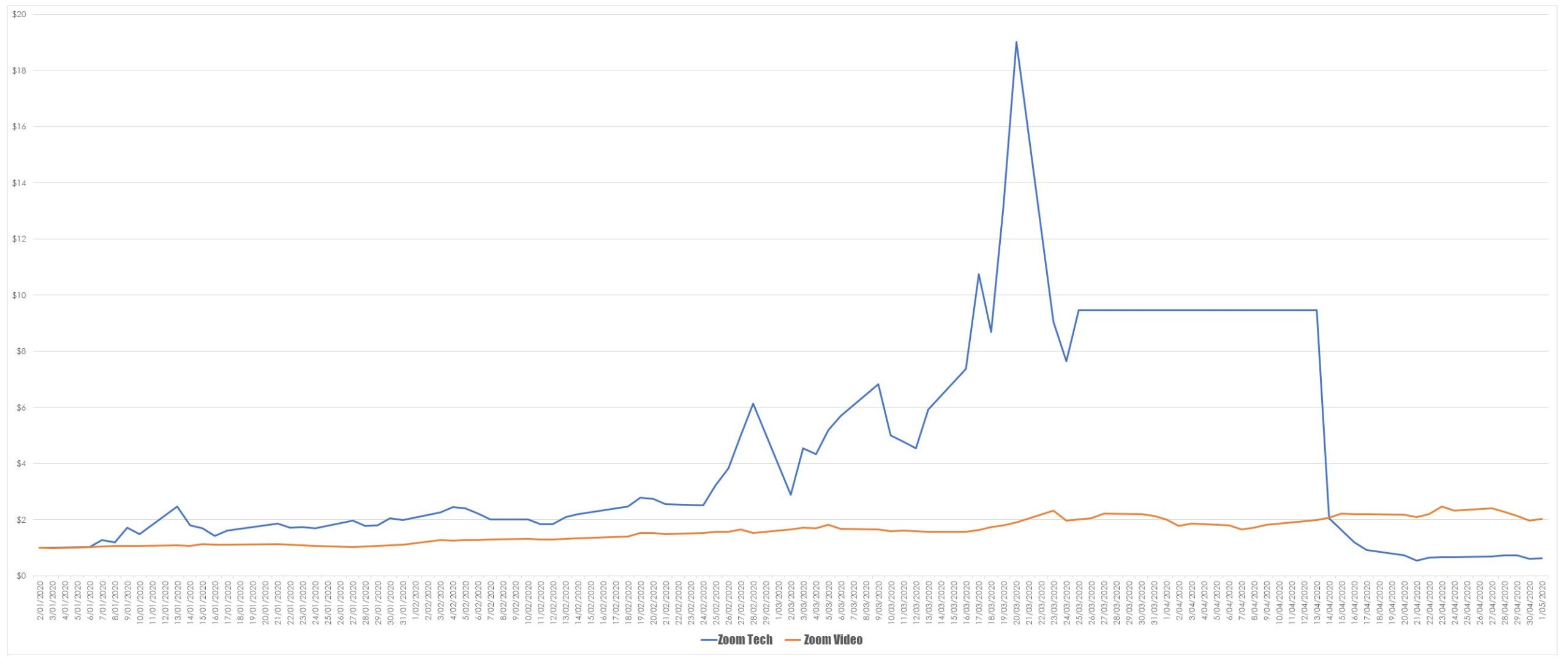
A few points. At its peak Zoom Technologies had a value according to our chart of $19.00 at the same time Zoom Communications was worth $1.90 a tenfold difference. When Zoom Technologies collapsed initially it was still worth $8.00 and Zoom Communications was worth $1.97. So let’s assume you were a naive investor who got it completely wrong in buying the wrong Zoom and as values collapse you panic out of the position. Your return is still 400% more than the so-called professional would have generated for you with their advice. In fact, right up until it all went horribly wrong you would still be miles ahead of the professionals.
I accept that this is somewhat of an example of the absurd so let’s examine a more mainstream example. Hedge funds are often touted as the best and the brightest so with this in mind, I went to HFR Hedge Fund database to see how funds as an industry had been doing for the year to date. The results are shown below –
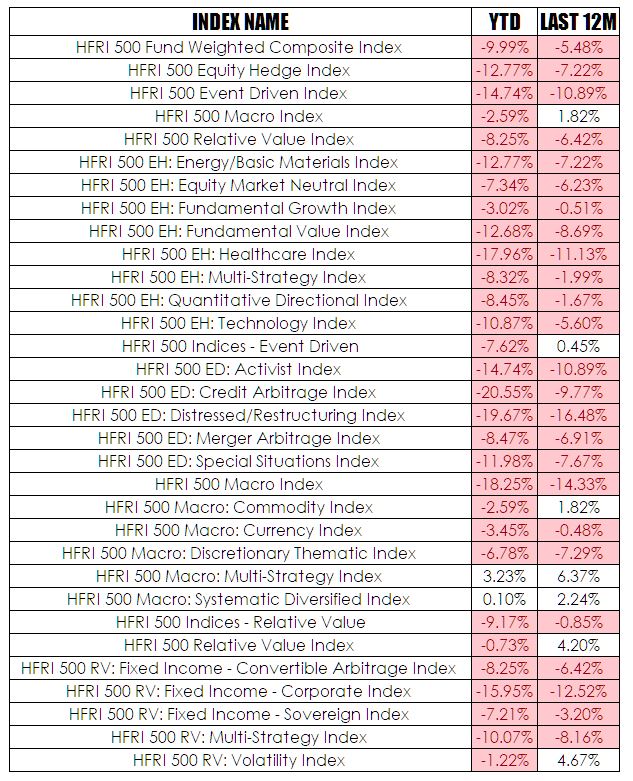
Those with a return of less than zero I have coloured red – as you can see it is a sea of red across all styles of management. Although this examination into the performance of the hedge fund industry also contains a problem in that it doesn’t really relate to the average local investor so I decided to have a look once again a the local superannuation industry. To do this I compared the median fund performance as noted by Chant West and matched that against the All Ordinaries Total Return Index for the same period. Those years when the median return was greater than the index I have coloured blue.
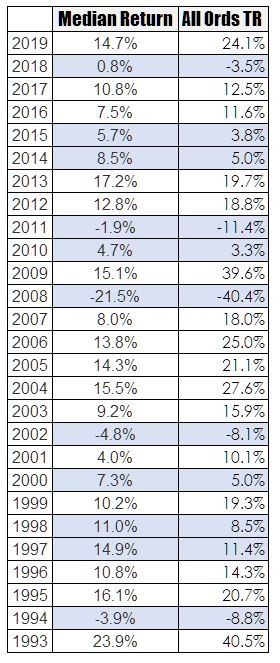
A cursory glance at this might convince you that the median performance does a reasonable job and actually has periods of outperformance. In part, this is why funds list their performance figures in percentage terms and not as a return on a given amount over time. The idea of average returns makes it very hard for the average investor to actually tell whether they are making money or not.
To provide a basis for comparison I mapped them all to the value of $1 invested over the period in question.
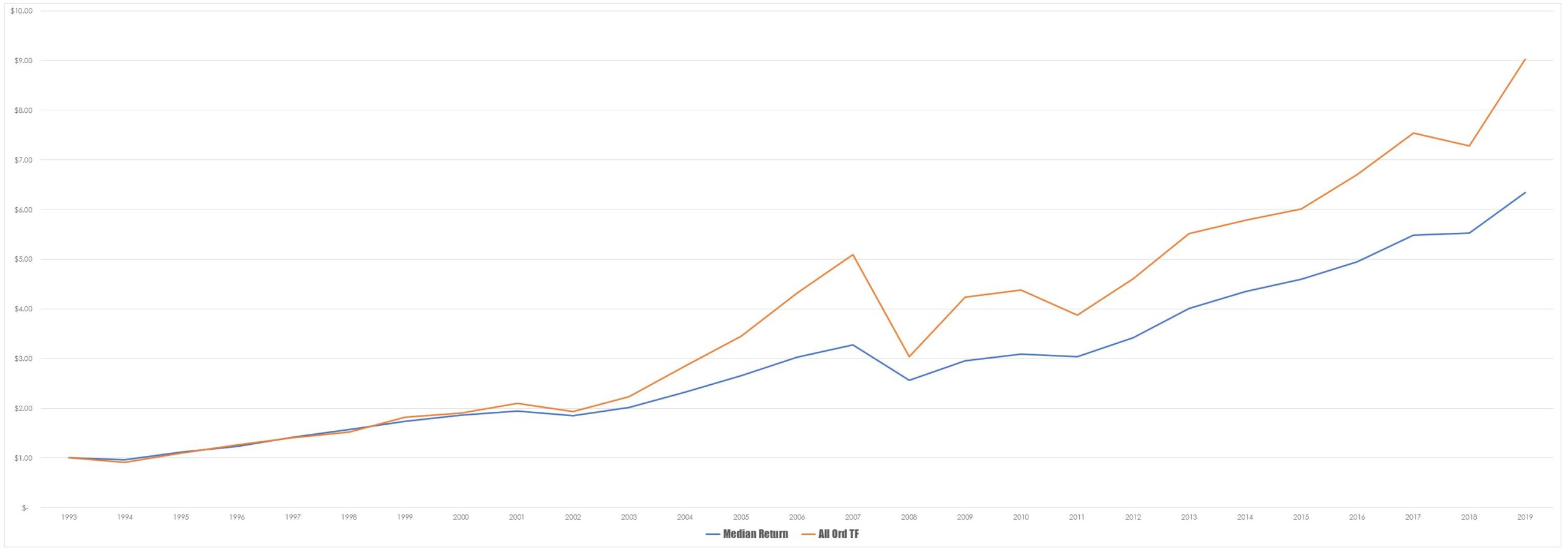
The terminal value for each is –
Median Fund Return – $6.34
All Ords Total Return – $9.03
Listening to the professionals means that you are almost 50% worse off than if you had simply stuck your money in the index and left it there. This result doesn’t take into account the massive year the market had in 1993 as this was the starting point for compulsory superannuation. If I assume that this year is taken into account by moving the start date to 1992 then the differential is –
Median Fund Return – $7.85
All Ords Total Return – $12.68
In this instance listening to the experts has cost you 61%
So, by all means, listen to the experts. But just be aware that there is probably a cost to this strategy.







I love these perspectives you provide us with Chris. Impressive. Really.
Thanks Chris,
You a are voice of reason, as always.